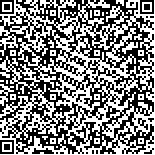|
| 引用本文: | 陈建华,于仁成,孔凡洲,高岩,罗璇,王云峰,周名江.北黄海海域虾夷扇贝体内脂溶性藻毒素分析.海洋与湖沼,2014,45(4):855-863. |
| |
|
| |
|
|
| 本文已被:浏览 2363次 下载 1694次 |

码上扫一扫! |
|
|
| 北黄海海域虾夷扇贝体内脂溶性藻毒素分析 |
|
陈建华1,2, 于仁成1, 孔凡洲1, 高岩1,2, 罗璇1, 王云峰1, 周名江1
|
|
1.中国科学院海洋研究所海洋生态与环境科学重点实验室 青岛 266071;2.中国科学院大学 北京 100049
|
|
| 摘要: |
| 海洋中有毒藻类产生的藻毒素能够经由食物链在滤食性贝类体内累积, 危及人类健康。高效液相色谱-串联质谱联用技术(HPLC-MS/MS)可以对多类脂溶性藻毒素进行同步分析, 是贝类中脂溶性藻毒素检测的首选方法。本文应用液-质联用方法, 对北黄海虾夷扇贝(Patinopecten yessoensis)中的脂溶性毒素进行了分析。虾夷扇贝样品于2011 年采自北黄海海域, 并解剖为闭壳肌、外套膜、内脏团和性腺四部分。在虾夷扇贝中共检测到大田软海绵酸(Okadaic acid, OA)、鳍藻毒素-1(Dinophysis toxin 1, DTX1)、扇贝毒素-2(Pectenotoxin 2, PTX2)和虾夷扇贝毒素(Yessotoxin, YTX)四种脂溶性毒素成分。在扇贝各组织中, 内脏团毒素含量最高(OA: 1.97—2.99μg/kg; DTX1: 4.97—77.29μg/kg;PTX2: 1.12—50.08μg/kg; YTX: 825—6680μg/kg), 其次是性腺和外套膜, 闭壳肌中毒素含量最低。各组织之间的毒素组成情况没有明显差异, 均以YTX 含量最高, 占脂溶性藻毒素总含量的90%以上。除YTX 外, 扇贝体内还存在一定量的OA、DTX1 和PTX2 毒素, 虾夷扇贝中检出PTX2 在我国系首次报道。北黄海海水样品中存在较高密度的渐尖鳍藻(Dinophysis acuminata)和倒卵形鳍藻(D. fortii),可能是虾夷扇贝体内OA, DTX1 和PTX2 的潜在来源。为防范虾夷扇贝中藻毒素造成危害, 应进一步强化对北黄海海域贝类中藻毒素及海水中有毒藻类的监测。 |
| 关键词: 脂溶性藻毒素 虾夷扇贝 北黄海 高效液相色谱-串联质谱联用技术 |
| DOI:10.11693/hyhz20130400016 |
| 分类号: |
| 基金项目:国家自然科学基金项目,41176100号;国家重点基础研究发展计划(973)项目,2010CB428700号;海洋公益性行业科研专项经费项目,201305010-1号。 |
| 附件 |
|
| DETECTION OF LIPOPHILIC PHYCOTOXIN IN PATINOPECTEN YESSOENSIS IN THE NORTHERN YELLOW SEA |
|
CHEN Jian-Hua1,2, YU Ren-Cheng1, KONG Fan-Zhou1, GAO Yan1,2, LUO Xuan1, WANG Yun-Feng1, ZHOU Ming-Jiang1
|
|
1.Key Laboratory of Marine Ecology and Environment Sciences, Institute of Oceanology, Chinese Academy of Sciences, Qingdao 266071, China;2.University of Chinese Academy of Sciences, Beijing 100049, China
|
| Abstract: |
| Phycotoxin produced by toxic dinoflagellates can be accumulated to a high level in shellfish via food chain, which may pose significant threats to the health of seafood consumers. Using liquid chromatography-tandem mass spectrometry (LC-MS/MS), different lipophilic phycotoxin was detected. We analyzed lipophilic phycotoxin in scallops Patinopecten yessoensis collected from the northern Yellow Sea in 2011. Samples were dissected into four parts: vicera, mantle, adductor muscle, and gonad. Four representative lipophilic toxins were detected, namely, okadaic acid (OA), dinophysis toxin 1 (DTX1), pectenotoxin 2 (PTX2), and yessotoxin (YTX). Toxin content in the vicera were the highest (OA: 1.97—2.99; DTX1: 4.97—77.29; PTX2: 1.12—50.08; and YTX: 825—6680 μg/kg), followed by gonad, mantle, and adductor muscle in turn. The toxin profiles are similar among the four tissues, of which YTX was the most predominant component, for taking over 90% of the total toxins. In addition, OA, DTX1, and PTX2 were also detected in other parts of the scallops. To our best knowledge, this is the first report of PTX2 detected from P. yessoensis in China. In the northern Yellow Sea, dinoflagellates Dinophysis acuminata and D. fortii were often observed, they could be potential origins of OA, DTX1, and PTX2 in the scallops. To prevent scallops from lipophilic phycotoxin contamination, monitoring on the phycotoxin and toxic algae in the northern Yellow Sea should be further strengthened. |
| Key words: lipophilic phycotoxins Patinopecten yessoensis northern Yellow Sea HPLC-MS/MS |
|
|
|
|
|
